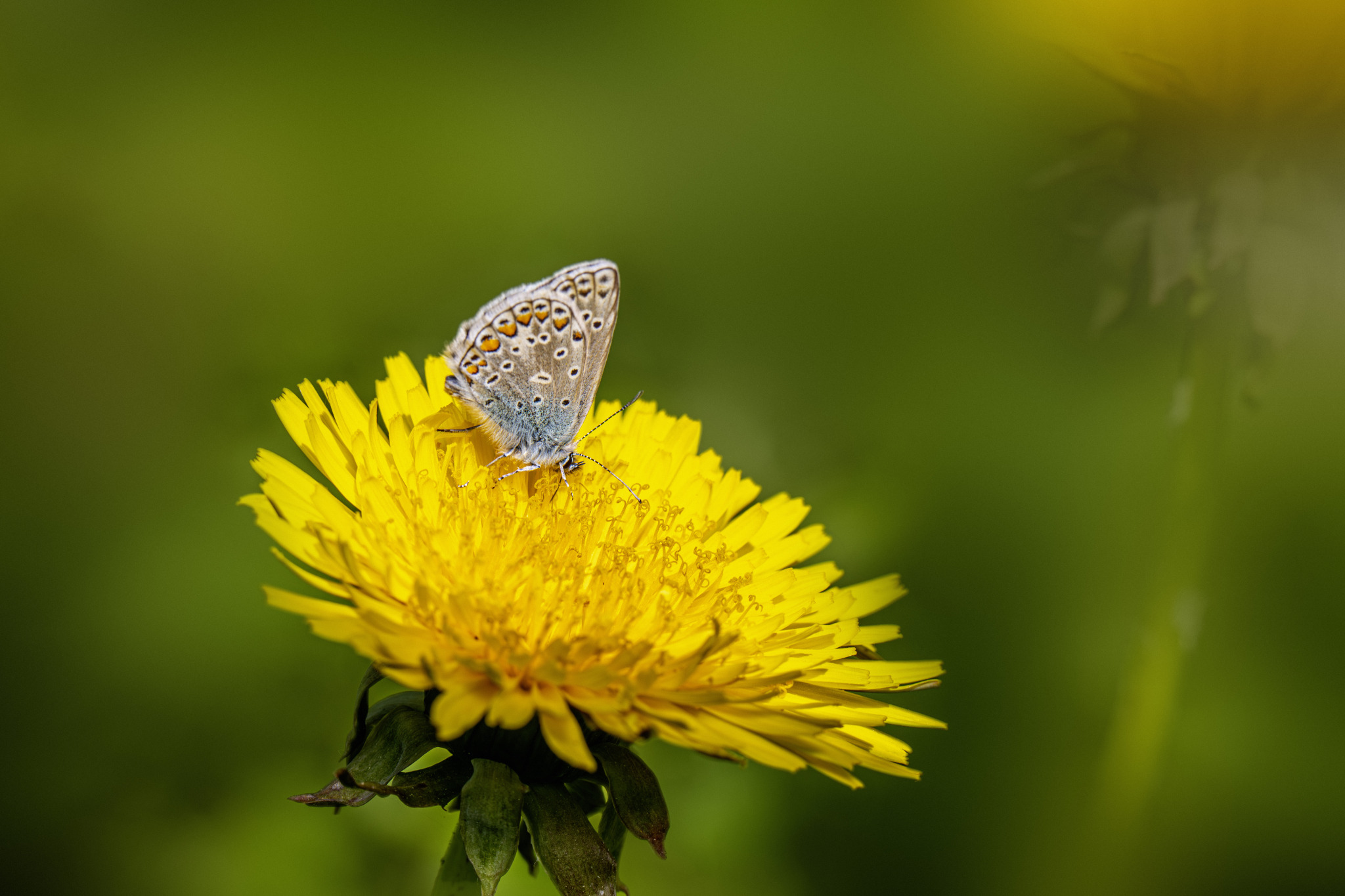Deep Overview: Common Blue (Polyommatus icarus)
The Common Blue (Polyommatus icarus) is one of Europe’s most widespread and recognizable butterflies, known for its brilliant blue coloration (in males), small size, and adaptability to a variety of habitats. Despite its name, not all individuals are blue—females often display brownish wings with orange spots, making them more difficult to identify.
Taxonomy & Classification
- Kingdom: Animalia
- Phylum: Arthropoda
- Class: Insecta
- Order: Lepidoptera
- Family: Lycaenidae (Blues, Coppers, and Hairstreaks)
- Genus: Polyommatus
- Species: Polyommatus icarus
- Common Names:
- Common Blue
- Icarus Blue
Physical Description
- Wingspan: 28–36 mm (1.1–1.4 in)
- Coloration & Markings:
- Males:
- Bright iridescent blue upperwings with a thin black border and white fringe
- Females:
- Brown upperwings with variable blue scaling
- Distinctive orange spots along wing edges
- Underwings (both sexes):
- Pale brown/gray with black spots, orange markings, and white halos
- Males:
- Key Features:
- Sexual dimorphism (males blue, females brownish)
- Antennae are black-and-white banded with a clubbed tip
Distribution & Habitat
- Geographic Range:
- Widespread across Europe, North Africa, and temperate Asia
- Found as far as Iceland, the British Isles, and the Middle East
- Preferred Habitat:
- Grasslands, meadows, coastal dunes, roadside verges, gardens, and woodland clearings
- Prefers open areas with wildflowers, especially where clovers and bird’s-foot trefoil grow
Behavior & Adaptations
- Fast, Agile Flyers:
- Males patrol territories searching for females
- Sun-Loving Species:
- Active on warm, sunny days
- Camouflage & Protection:
- Brownish underwings provide excellent camouflage when resting
- Multiple Generations per Year:
- In warmer regions, there can be 2–3 broods per year
Diet & Feeding Habits
- Caterpillars (Larvae):
- Feed on leguminous plants (bird’s-foot trefoil, clovers, medick)
- Adult Butterflies:
- Nectar feeders preferring thistles, knapweed, clover, and dandelions
- Feeding Strategy:
- Often seen nectaring with wings closed, revealing cryptic underwings
Reproduction & Life Cycle
- Breeding Season:
- April to October (varies by region)
- Egg-Laying:
- Females lay eggs on host plants, usually on leaf buds or stems
- Caterpillar Stage:
- Pale green larvae with faint stripes
- Have a mutualistic relationship with ants (ants “farm” them for secreted sugary substances)
- Pupation & Overwintering:
- Overwinters as a chrysalis (pupa) among leaf litter or near plant roots
- Lifespan:
- Adults live around 2–3 weeks
Predators & Threats
- Natural Predators:
- Birds, spiders, predatory insects
- Human-Related Threats:
- Habitat destruction due to intensive farming and urbanization
- Overuse of pesticides and herbicides, reducing host plants and nectar sources
- Conservation Status:
- Least Concern (LC) but experiencing localized declines in some areas
Ecological Importance
- Pollinator:
- Contributes to pollination of wildflowers and crops
- Part of the Food Web:
- Provides a food source for birds, reptiles, and predatory insects
- Ant Symbiosis:
- Some caterpillars form mutualistic relationships with ants, which protect them from predators
Relationship with Humans
- Common in Gardens & Parks:
- Frequently seen visiting nectar-rich flowers
- Indicator of Biodiversity:
- The presence of Common Blues signals a healthy ecosystem
- No Agricultural Impact:
- Larvae feed on wild plants, not crops
Fun Facts
- Males patrol constantly to find females, sometimes traveling great distances
- The “blue” color is structural, caused by microscopic wing scales reflecting light
- Can be confused with other blue butterfly species, like the Adonis Blue and Holly Blue
- One of the few butterflies that can have multiple generations per year in warm climates
Conclusion
The Polyommatus icarus is a widespread, adaptable butterfly that thrives in open, flower-rich habitats. Its brilliant blue coloration (in males), territorial behavior, and role as a pollinator make it an important and beautiful species. While still common, habitat destruction poses a growing threat to its populations.
Views: 380
Subscribe to the newsletter:
